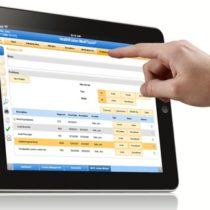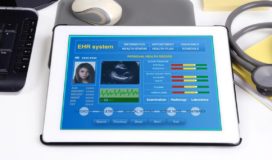
A Comprehensive Guide to Electronic Medical Records (EMR) Systems
EMR stands for Electronic Medical Records software, and there’s no question that having a highly advanced system can help you decrease costs and increase revenue. EMR systems lie at the center of any computerized health information system, and without them other modern technologies such as decision support systems cannot be effectively integrated into routine clinical workflow.
The paperless, interoperable, multi-provider, multi-specialty, multidiscipline computerized medical record, which has been a goal for many researchers, healthcare professionals, administrators and politicians for the past 20+ years, is however about to become a reality in many western countries.
What is EMR?
Electronic Medical Records (EMR) Systems have emerged as a transformative force in the healthcare landscape, revolutionizing the way patient information is documented, stored, and utilized. In the not-so-distant past, healthcare providers relied heavily on paper-based records, a system fraught with inefficiencies and limitations. The transition to EMR systems represents a pivotal shift towards a digital era of healthcare management.
Definition and Purpose
At its core, an Electronic Medical Record (EMR) is a digital version of the traditional paper chart, containing a patient’s medical history, diagnoses, medications, treatment plans, immunization dates, allergies, radiology images, and laboratory test results. Unlike paper records, EMRs provide a comprehensive, real-time view of a patient’s health, enabling healthcare professionals to make informed decisions promptly.
The primary purpose of EMR systems is to enhance the quality of patient care. By consolidating and organizing vast amounts of health information into a centralized digital repository, healthcare providers can access a patient’s complete medical history with just a few clicks.
This instant access facilitates quicker and more accurate diagnoses, reduces the likelihood of medical errors, and improves overall treatment outcomes.
The Digital Revolution
The evolution of EMR systems represents a significant departure from the traditional pen-and-paper approach to healthcare documentation. Historically, patient records were stored in physical files, making retrieval time-consuming and prone to errors. The advent of EMR systems streamlines this process, allowing healthcare professionals to access patient information instantly, promoting a more efficient and patient-centered approach to care.
Evolution of EMR Systems
The journey of Electronic Medical Records (EMR) Systems is a testament to the relentless march of technology in reshaping the healthcare landscape. Tracing back to the roots of healthcare documentation, one can appreciate the monumental shift from the labor-intensive world of paper records to the seamless integration of digital EMR systems.
Historical Context
The origins of EMR systems can be traced back to the 1960s and 1970s when healthcare institutions began experimenting with early computerized systems to manage patient information. These rudimentary systems, often limited to specific departments, laid the groundwork for the more comprehensive solutions we have today.
The 1980s witnessed the emergence of standalone EMR systems that marked a departure from traditional paper records. These early systems paved the way for the integrated and interoperable solutions we see today.
Technological Milestones
The 1990s brought significant advancements, with the widespread adoption of computers in healthcare settings. However, it wasn’t until the 21st century that EMR systems gained substantial traction. The introduction of federal initiatives, such as the Health Information Technology for Economic and Clinical Health (HITECH) Act in 2009, provided financial incentives for healthcare providers to adopt and meaningfully use electronic health records (EHRs), a term often used interchangeably with EMRs.
The evolution of EMR systems has been marked by the gradual transition from standalone systems to more interconnected, interoperable networks. As technology advanced, so did the capabilities of EMR systems, incorporating features such as electronic prescribing, clinical decision support, and data exchange among healthcare entities.
The shift from paper records to EMR systems represents a paradigm shift in healthcare administration. Digital records not only provide a more efficient means of storing and retrieving information but also facilitate collaboration among healthcare providers, leading to more coordinated and patient-centric care.
Key Features of EMR Systems
Electronic Medical Record (EMR) Systems are characterized by a myriad of features that collectively redefine how healthcare professionals interact with patient information. These features go beyond the traditional capabilities of paper records, offering a comprehensive and dynamic platform for managing, analyzing, and leveraging health data.
Patient Demographics
One of the fundamental features of EMR systems is the ability to capture and store detailed patient demographics. This includes information such as patient names, addresses, contact details, insurance information, and other pertinent identifiers. The digital nature of this data allows for swift retrieval and updates, ensuring accuracy in patient identification and contact.
Clinical Documentation
At the heart of EMR systems lies the capacity to document and organize clinical information seamlessly. Healthcare providers can record patient encounters, diagnoses, treatments, and follow-up plans digitally. This feature not only streamlines the documentation process but also enhances the comprehensiveness and legibility of patient records, mitigating the risks associated with handwritten notes.
Interoperability
Interoperability is a critical feature that distinguishes modern EMR systems. The ability to share information across different healthcare settings and systems ensures that patient data is accessible to authorized professionals when and where it is needed. Interoperability facilitates smoother transitions of care, collaboration among healthcare providers, and a more holistic view of a patient’s health history.
As technology continues to advance, interoperability becomes increasingly crucial for delivering integrated and coordinated care. Efforts to establish standardized data exchange formats, such as Fast Healthcare Interoperability Resources (FHIR), play a pivotal role in promoting seamless information flow between diverse EMR systems.
Benefits of EMR Systems
Electronic Medical Record (EMR) Systems offer a multitude of benefits that significantly enhance the quality of healthcare delivery, streamline administrative processes, and improve patient outcomes. From enhancing clinical decision-making to reducing operational costs, EMR systems play a pivotal role in modern healthcare ecosystems.
- Improved Patient Care: One of the primary advantages of EMR systems is their contribution to improved patient care. By providing healthcare professionals with instant access to comprehensive and up-to-date patient information, EMRs facilitate quicker diagnoses and more informed treatment decisions. This accessibility also enables healthcare providers to track patient progress over time, identify trends, and personalize care plans based on individual health histories and preferences.
- Efficiency and Cost Savings: EMR systems streamline administrative tasks and reduce the reliance on paper-based processes, leading to significant efficiency gains within healthcare organizations. Tasks such as appointment scheduling, billing, and coding are automated, minimizing errors and freeing up healthcare professionals to focus more on patient care. Moreover, the transition to digital records reduces the costs associated with paper storage, transcription services, and duplicate tests, contributing to overall cost savings for healthcare providers.
- Data Accuracy and Security: The digital nature of EMR systems enhances the accuracy and integrity of patient data. Built-in checks and balances help to ensure that information is entered correctly and consistently across different departments and healthcare settings. Additionally, EMRs incorporate robust security measures to protect sensitive patient information from unauthorized access or breaches, adhering to stringent healthcare regulations such as the Health Insurance Portability and Accountability Act (HIPAA).
- Enhanced Communication and Collaboration: EMR systems facilitate seamless communication and collaboration among healthcare providers. Care teams can easily share patient records, test results, and treatment plans electronically, fostering interdisciplinary collaboration and continuity of care. This real-time information exchange is particularly beneficial in emergency situations or when coordinating care across multiple specialists and healthcare facilities.
The benefits of EMR systems extend beyond mere digitization of patient records; they empower healthcare providers with tools to deliver more efficient, personalized, and secure patient care.
Challenges and Concerns
While Electronic Medical Record (EMR) Systems offer substantial benefits, their adoption and implementation also present significant challenges and raise valid concerns within the healthcare community. Addressing these issues is crucial for maximizing the potential of EMRs while mitigating potential risks and ensuring patient safety and confidentiality.
Interoperability Challenges
One of the foremost challenges facing EMR systems is interoperability—the ability of different systems and healthcare providers to seamlessly exchange and use patient information. Variations in data formats, incompatible software platforms, and differing implementation standards can hinder effective communication and coordination of care. This lack of interoperability often leads to fragmented patient records and compromises the continuity of care across healthcare settings.
Data Security and Privacy Concerns
The digital nature of EMR systems introduces new vulnerabilities and concerns regarding the security and privacy of patient information. Healthcare organizations must implement robust cybersecurity measures to safeguard sensitive data from unauthorized access, breaches, and cyberattacks. Compliance with regulatory requirements, such as HIPAA, is essential to protect patient confidentiality and maintain trust in EMR systems.
User Interface and Usability Issues
The usability of EMR systems remains a persistent challenge for healthcare providers. Complex user interfaces, cumbersome navigation, and the time required for data entry can detract from clinical workflows and contribute to provider dissatisfaction. Improving the design and usability of EMR systems is crucial to enhancing user experience and ensuring that healthcare professionals can efficiently navigate and utilize these systems in their daily practice.
Cost and Resource Allocation
The initial costs associated with implementing EMR systems, including software purchase, hardware upgrades, staff training, and workflow redesign, can pose financial challenges for healthcare organizations, particularly smaller practices and community hospitals. Ongoing maintenance costs, software updates, and technical support further strain resources. Balancing these expenses with the potential long-term benefits of EMR adoption requires careful planning and financial management.
Resistance to Change
Resistance to change among healthcare providers and staff is another significant barrier to the successful adoption and utilization of EMR systems. Transitioning from familiar paper-based processes to digital workflows requires training, cultural adaptation, and organizational support. Effective change management strategies, leadership buy-in, and continuous education are essential to overcoming resistance and fostering a positive EMR adoption environment.
Health ITWhile EMR systems promise to revolutionize healthcare delivery, addressing challenges related to interoperability, data security, usability, cost, and change management is essential to realizing their full potential.




